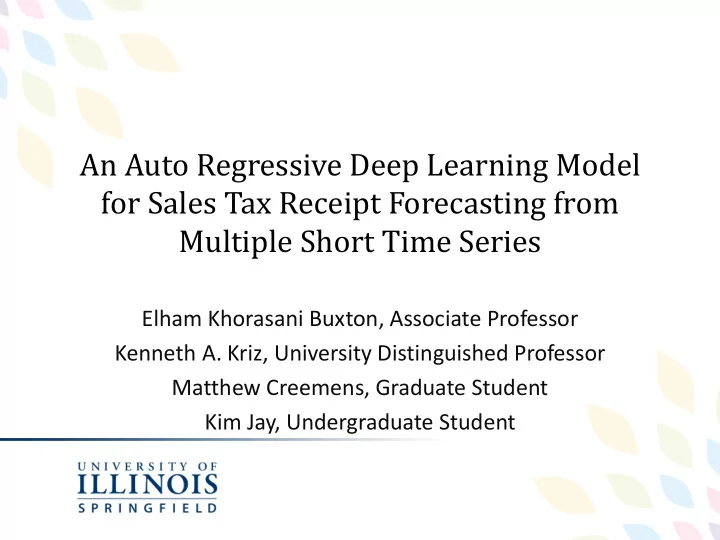

An Auto Regressive Deep Learning Model for Sales Tax Receipt Forecasting from Multiple Short Time Series Elham Khorasani Buxton, Associate Professor Kenneth A. Kriz, University Distinguished Professor Matthew Creemens, Graduate Student Kim Jay, Undergraduate Student
Background How to forecast sales tax receipts? “State lacks a good forecasting model” – Revenue Manager, Commission on Government Forecasting and Budgetary Accountability Usual suspects – Naïve models – Regression-based models – System models Issues – Volatility – Seasonality – Structural breaks/Instability 1
(Relatively) New Approach: Deep Learning Methods Part of the “unsupervised machine learning” category of models Foundation are multi-layer perceptron models – a type of artificial neural network 2
Long-Short Term Memory Model A type of recurrent neural network, appropriate for time- series data Makes the weight at time t a function of inputs at time t and prediction at t-1 Includes a forget gate and an update gate 3
Data and Methodology Quarterly sales tax receipts by SIC industries, 1999-2018 – T=77, n=10 – Data is detrended and seasonally adjusted Compared forecast accuracy using MAPE – MLP – LSTM – ARIMA Walk-forward cross-validation 4
Time Series 5
Results 6
Next Steps 4-period ahead forecasts Include regional effects Use other types of recurrent neural networks 7
SUPPLEMENTAL SLIDES 8
Specific Models 9
Recommend
More recommend